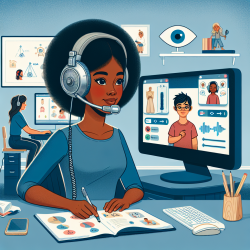Introduction
In the realm of speech-language pathology, data-driven decision-making is paramount. As practitioners, we are constantly seeking innovative approaches to enhance therapeutic outcomes, particularly for children. Recent reflections by John Y.L. Chiang on his lifelong dedication to bile acid research, published in the Journal of Biological Chemistry, offer valuable insights that can be translated into our field. While bile acid research may seem unrelated at first glance, the principles of perseverance, collaboration, and embracing new methodologies are universal and can significantly impact our practice.
Key Takeaways from Bile Acid Research
Chiang's journey in bile acid research emphasizes the importance of perseverance and adaptability. He faced numerous challenges, from purifying cholesterol 7α-hydroxylase to cloning CYP7A1 cDNA. His success was not only due to his scientific expertise but also his willingness to learn new techniques and collaborate with others. These lessons are directly applicable to speech-language pathology.
Implementing Research Outcomes in Practice
Here are some strategies to integrate these insights into speech-language pathology:
- Embrace Collaboration: Just as Chiang collaborated with international researchers, we can enhance our practice by collaborating with other professionals, such as occupational therapists and educators, to provide holistic care for children.
- Adopt New Technologies: Chiang's success was partly due to his adoption of molecular biology techniques. In our field, embracing teletherapy platforms like TinyEYE can expand access to services and improve outcomes.
- Persevere Through Challenges: The path to innovation is often fraught with challenges. Perseverance, as demonstrated by Chiang, is crucial. When faced with difficult cases or resistance to new methods, maintaining a commitment to evidence-based practices will lead to better outcomes.
Encouraging Further Research
Chiang's work underscores the value of continuous research and development. As practitioners, we should encourage and participate in research initiatives that explore new therapeutic techniques and interventions. By staying informed about the latest research, we can apply cutting-edge strategies to our practice, ultimately benefiting the children we serve.
Conclusion
John Y.L. Chiang's reflections on bile acid research provide a compelling narrative of dedication and innovation. By adopting his principles of collaboration, technological adoption, and perseverance, speech-language pathologists can enhance their practice and improve outcomes for children. To delve deeper into Chiang's research journey, you can access the original research paper titled My lifelong dedication to bile acid research.










